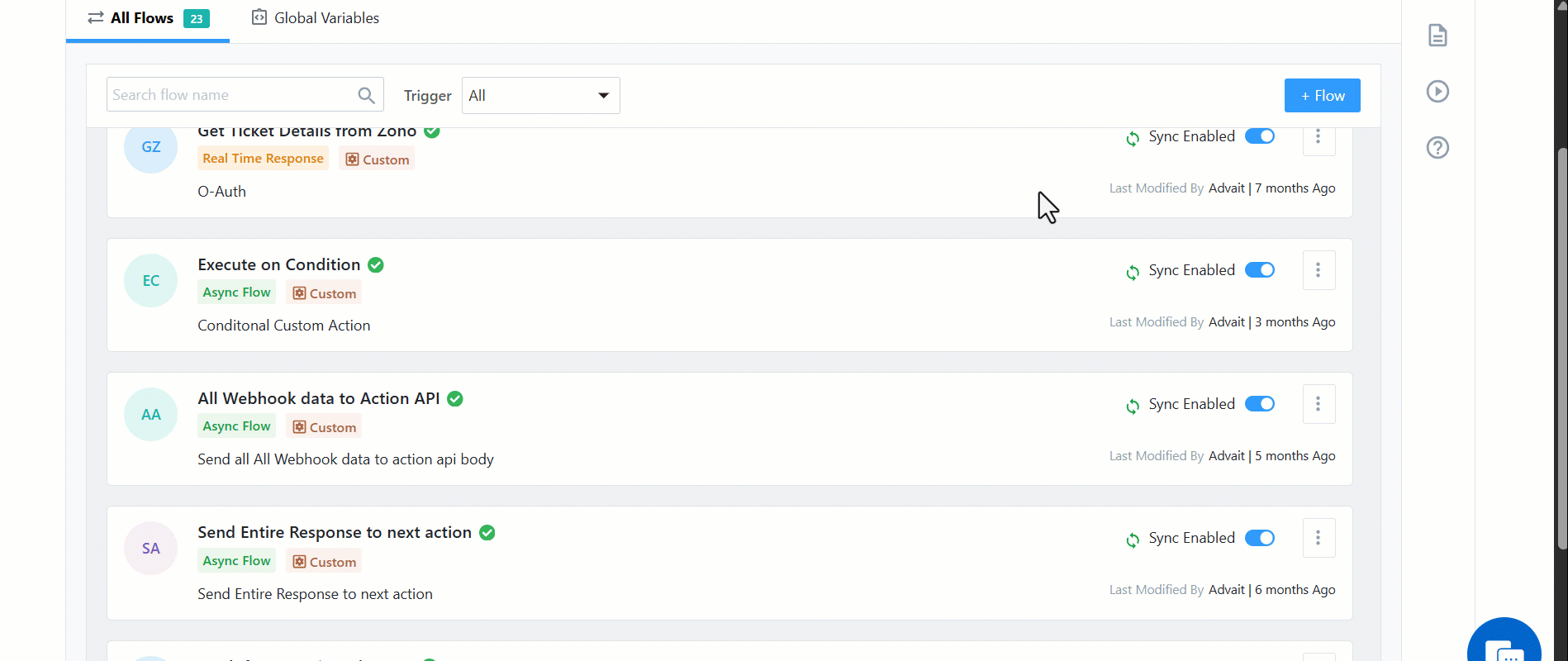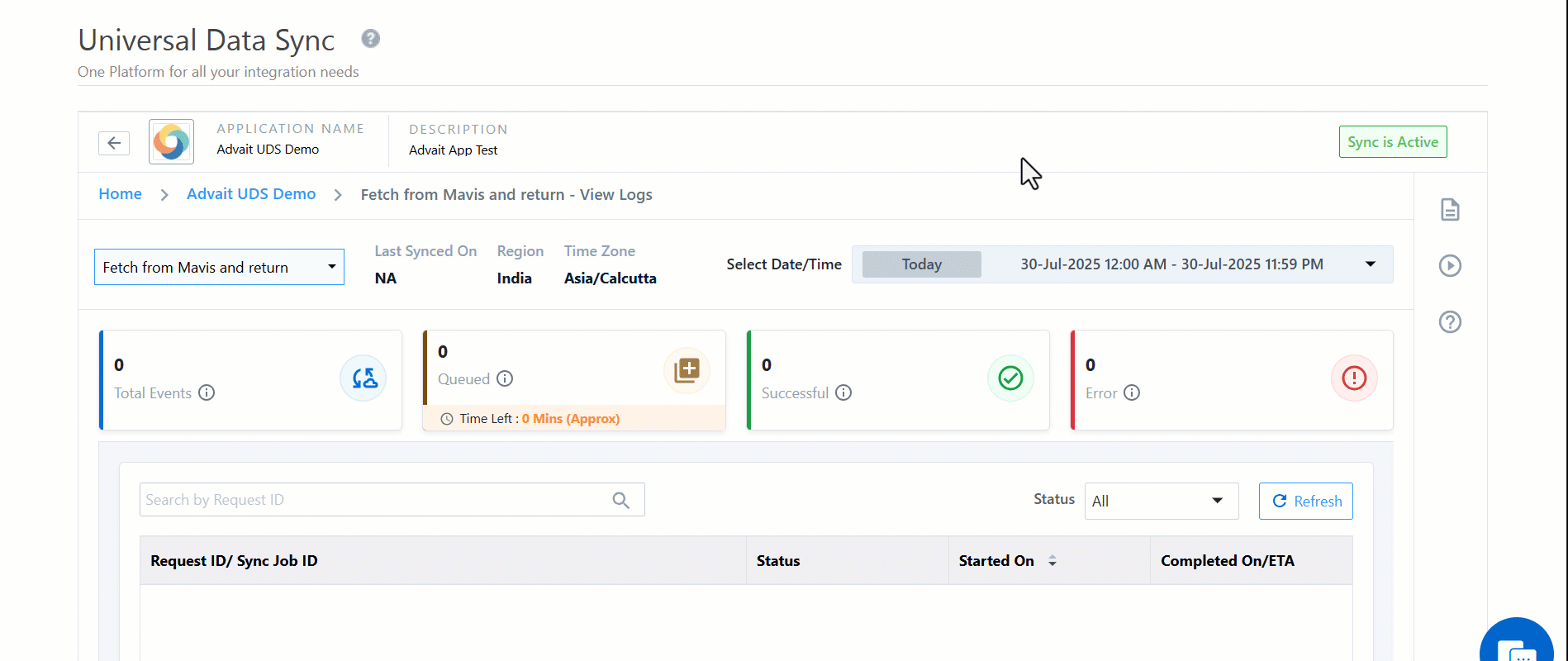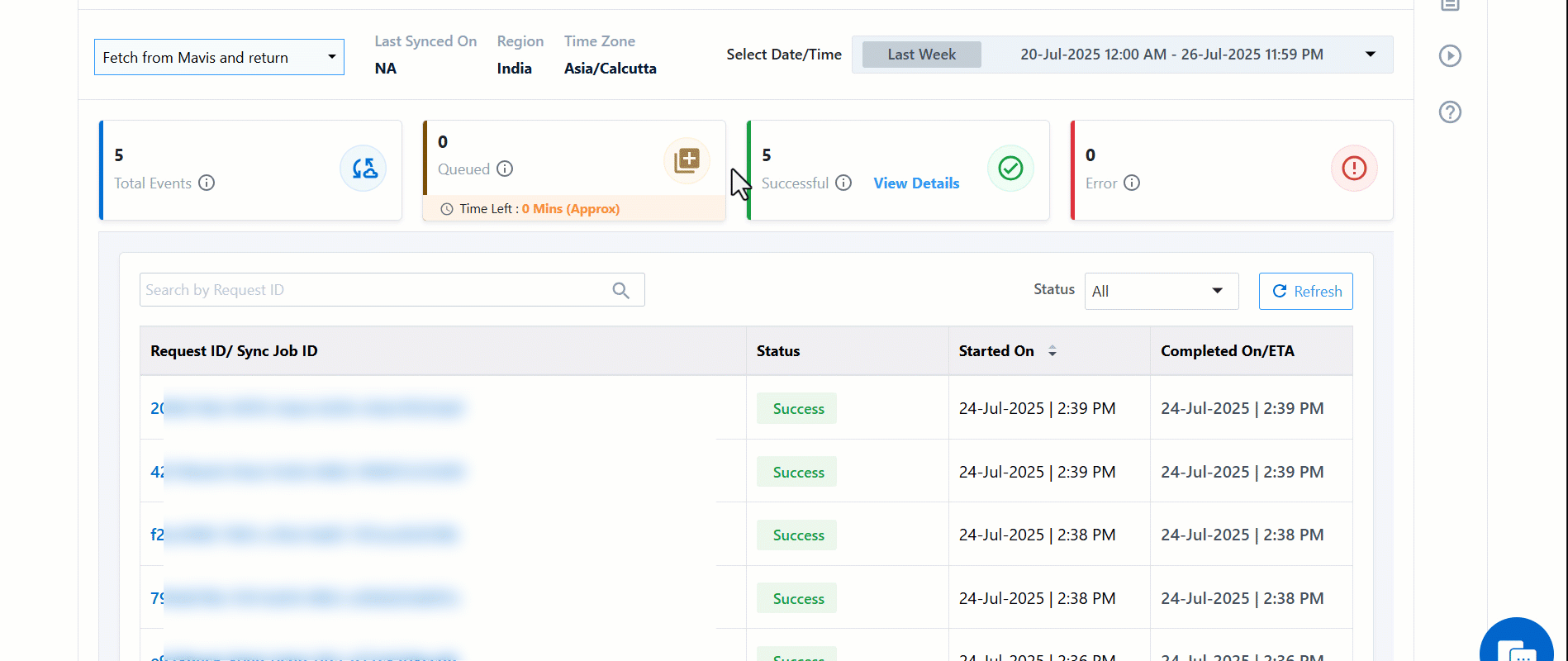1. Feature Overview
The Logs feature in Universal Data Sync (UDS) allows you to monitor and troubleshoot the execution of your data sync flows. It provides complete visibility into the input requests, action-wise execution paths, transformation outcomes, and response payloads.
Each log entry reflects a unique request processed by a UDS flow and helps you:
- Understand how each step in the flow was executed.
- Identify failed or skipped actions.
- Debug input-output mappings and transformations.
- Track API return responses.
Key highlights:
- Logs are stored for 90 days.
- You can filter logs by flow name and its date range.
- All request and action statuses are recorded.

2. Prerequisites
- You must be an Administrator user, or access must be shared to you by an Admin user
- The Universal Data Sync Connector is a paid feature. To enable it on your account, contact your account manager, or write to support@leadsquared.com.
3. Use Case
Let’s say you’ve configured a flow that fetches data from a database and returns it via an API. You want to:
- Confirm if the data was fetched correctly.
- Check if transformations were applied properly.
- Ensure the correct data was sent in the response.
Using the logs, you can trace each action that was executed, verify the output at each stage, and understand exactly what was returned to the caller.
4. Accessing Logs
You can access logs from:
- The All Flows screen (click the three-dot menu next to a flow>Logs).
- The individual Flow Details page (click the Logs tab).

Logs are grouped by flow and are filterable by date and time.

5. Understanding Log Details
At the top of the logs page, you’ll see a summary section that displays:
- Total number of events – Total requests received or sent on UDS.
- Queued Requests – Total requests that are in progress or are scheduled for delayed time due to set rate limit.
- Successful Requests – Total requests that were successfully processed or intentionally skipped according to set conditions.
- Error Requests – Total requests that encountered general errors, partial errors, complete failures, or were invalid due to incorrect or incomplete data.
This summary auto-updates when you adjust the date range.
Each individual log entry includes:
- Request ID/Sync Job ID
- Status for each request
- Execution Timeline
- Status for each action
- Return Response (if applicable)*
*Return Response Actions are not visible as separate log steps, but their responses are logged in the output.

6. Execution Statuses
6.1 Request-level Status Definitions
Each UDS log entry includes a request-level status that summarizes the outcome of all actions executed in a flow. Here’s what each status means:
| Status Type | Definition |
| Queued | The request was accepted and is waiting in the queue to be processed. |
| Success | The request was accepted, and all actions were processed with statuses marked as either Success or Skipped, with at least one action marked as Success. |
| Skipped | The request was accepted, and all actions were processed with a status of Skipped. |
| Invalid | The request was accepted, but at least one action was marked as Invalid due to missing or malformed input variables. |
| Failed | The request was not accepted, and the webhook response was returned as an Error (e.g., due to rate limits, invalid authentication, etc.). |
| Partial Error | The request was accepted, with at least one action marked as Success or Skipped, and at least one action marked as Error. |
| Error | The request was accepted, and all actions were processed with a status of Error. |
| Rejected | The request was rejected due to exceeding the maximum number of requests defined in the trigger’s advanced configuration. |
These statuses help you quickly identify whether a request completed successfully or encountered issues during processing.
6.2 Action-level Statuses
Each action in a flow also logs an individual status:
- Success – Action completed without errors.
- Invalid – Input values or configurations were missing or incorrect.
- Error – The action failed during execution.
- Skipped – Action did not run due to conditional logic or data absence.
Any Questions?
Did you find this article helpful? Please let us know any feedback you may have in the comments section below. We’d love to hear from you and help you out!






